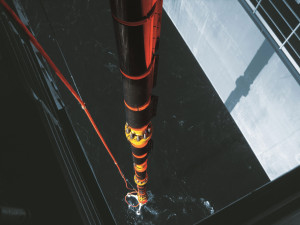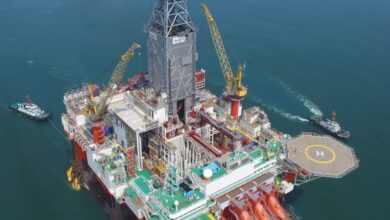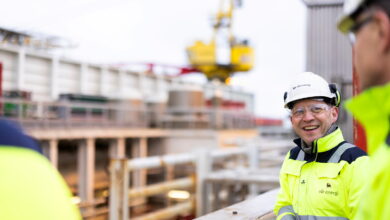High-pressure riser project extends jackup application in deeper waters

Claxton has provided a high-pressure drilling riser for two wells in 132 meters of water on a Gullfaks satellite field in Norway. Statoil used the West Elara jackup to install the riser, which posed water depth challenges. “For jackup operations, deepwater is over 80 meters. Leg length determines the depth that jackup rigs can operate in, but average jackup rigs like the West Elara are for 80 to 100 meters of water, so 132 meters was challenging,” Darren Bowyer, Claxton project manager, said. “The main issue is scaling up the needs of deeper water. Depth increases the current and wave deflection of the jackup rig and the drilling riser and increases loading on the whole system.”
Adding to this challenge, the riser had to be ready for installation in eight months to meet the rig’s operational schedule. Claxon, an Acteon company, managed the project with support from sister companies 2H Offshore, Pulse Structural Monitoring and Subsea Riser Products.
“The industry has little experience of jackup rigs in depths greater than 100 meters and in harsh environments. This makes for conservatism in design and operations. Furthermore, during high-pressure operations, well control considerations require a large blowout preventer, which adds a stiff component to the drilling riser and changes the dynamics of the string,” Mr Bowyer said.
Drilling riser designs aim to minimize the risk of failure and meet design code and standard safety margins but often have a large built-in “comfort factor” for coping with complex and unpredictable loading, according to Claxton.
The loading that a riser will face is difficult to model and is usually simplified for the design process because some factors are not well understood. For example, engineers must make assumptions about weather patterns in their model’s input data. The fatigue information used is often based on standard industry codes rather than component tests and monitoring. Consequently, designers can find it challenging to calibrate their models with data gathered during operations.
For this project, 2H improved the model for riser loading, and the project team recommended changing operational procedures to reduce riser deflections in the splash zone caused by waves and currents. The modeling indicated potential for very high fatigue in the original riser design so it was necessary to change the riser, the rig and the air gap.
Alterations to the drilling riser design included adding a vortex-induced vibration suppression system; using forged rather than welded joints in high-stress and fatigue-prone areas; and upgrading the tensioning system to 500 tons.
“Adding special fairings to reduce vortex-induced vibration and drag was a first for a high-pressure drilling riser in the North Sea,” Mr Bowyer said.
The rig design changes included increased load capacity for the Texas deck. The rig’s overshot capacity was also reviewed, but it was found to be fit for purpose.
This project was the first use of Claxton’s NT-2 tool for deploying a riser and enabled it to be pressure-tested before makeup to the blowout preventer.
Pulse developed a riser monitoring system to gather field data, enable integrity management and verify the predicted models. The system included topside and subsea sensors for recording movement, load and dynamic bending parameters.
Claxton believes this project provided valuable insights into the use of jackup systems in deeper waters. “This project had a challenging time frame, and about 90% of the riser was changed after the contract award,” Mr Bowyer said. “By drawing on successful projects like this, it should be possible to extend jackup drilling deeper.”




